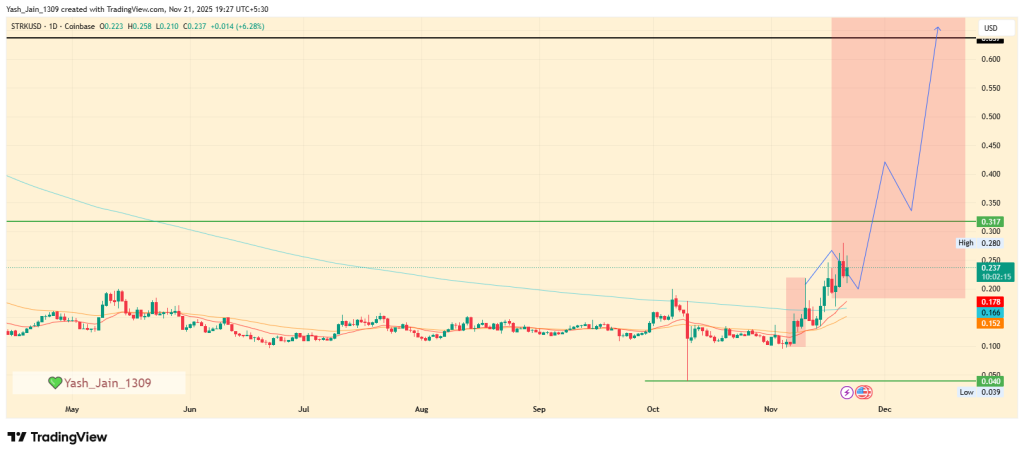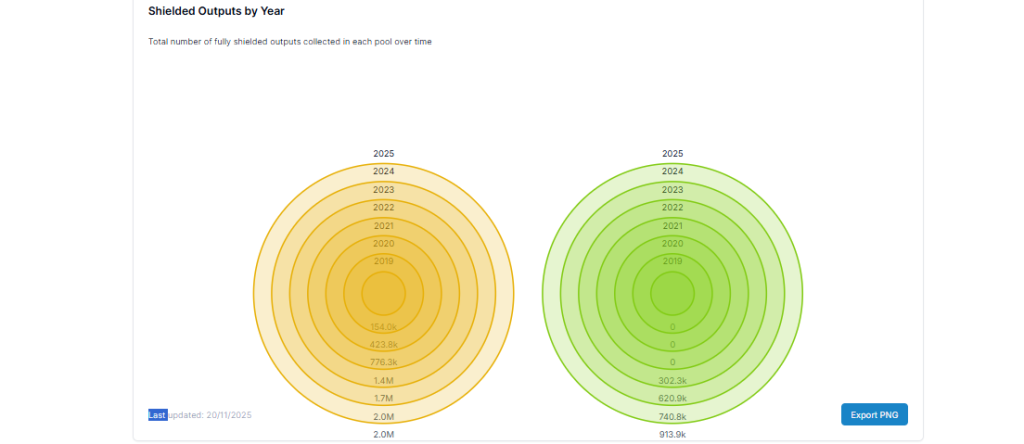Bitcoin's Derivatives-Long Overhang and Spot-Derivatives Divergence: Navigating Structural Risks and Contrarian Opportunities
- Bitcoin's August 2025 market shows sharp divergence: derivatives funding rates hit 0.0084 (211% rebound) amid $1.2B ETF outflows and $900M liquidations. - Structural risks emerge as long/short ratio normalizes to 1.03, masking leveraged fragility exposed by $2.7B whale dump triggering $500M liquidations. - On-chain signals highlight overbought conditions (NUPL 0.72) and technical bearishness with 100-day EMA breakdown to $106,641. - Contrarian opportunities arise as Derivative Market Power index stabiliz
The Bitcoin market in August 2025 is a study in contradictions. Derivatives funding rates have surged to 0.0084, a 211% rebound from the bearish nadir of 0.0027 in early August, signaling aggressive long-positioning by traders betting on further price gains. Yet, spot markets tell a different story: ETF outflows of $1.2 billion, cascading liquidations of $900 million in leveraged positions, and a 7% drop in price from its $124,533 peak. This divergence between derivatives optimism and spot fragility raises critical questions: Is this a short-term bottoming scenario, or the prelude to a deeper bearish phase?
Structural Risks in Derivatives Long Overhang
The derivatives market's bullish overhang is both a strength and a vulnerability. Elevated funding rates reflect institutional and retail traders paying to hold long positions, a behavior historically observed during speculative frenzies. For example, in 2021, Tesla's $1.5 billion Bitcoin investment triggered a 40% spike in open interest and positive funding rates, foreshadowing a $60,000 peak. However, the current environment is more precarious.
The long/short ratio, a key indicator of speculative positioning, normalized to 1.03 in early August after hitting an extreme bearish 0.44 in July. While this suggests a shift toward balance, it also masks concentrated leverage. The recent $2.7 billion whale dump of 24,000 BTC—triggering $500 million in liquidations—exposed the fragility of leveraged positions. This mirrors the 2022 FTX collapse, where a 60% drop in open interest and negative funding rates preceded a 150% rebound by mid-2023. The August 2025 scenario, however, lacks the same institutional safety net: ETF outflows and thin liquidity amplify the risk of cascading sell-offs.
Spot-Derivatives Divergence: A Warning Signal
The spot market's divergence from derivatives optimism is a red flag. ETF outflows of $1.2 billion in August—driven by macroeconomic uncertainties and whale-driven volatility—contrast sharply with the $2.85 billion inflows into Ethereum ETFs. This capital reallocation underscores a broader shift in institutional demand toward assets with clearer regulatory clarity (e.g., Ethereum under the CLARITY Act) and yield advantages.
On-chain data further highlights the fragility. The NUPL (Net Unrealized Profit/Loss) ratio at 0.72 indicates overbought conditions, with 97% of Bitcoin supply in profit. Yet, the MVRV Z-Score at 1.43—a historical marker of local bottoms during bull cycles—suggests that a drop below 1.3 could trigger panic selling. The recent 100-day EMA breakdown to $106,641 and the retest of the $105,390 Fibonacci retracement level add technical bearishness.
Contrarian Entry Points: On-Chain Signals and Liquidity Dynamics
Despite the risks, structural imbalances create contrarian opportunities. The Derivative Market Power (DMP) index, which tracks open interest, funding rates, and taker imbalances, has stabilized from -559K to -420K, signaling waning bearish pressure. This mirrors patterns during the 2024 ETF-driven rally and the 2020 pandemic recovery, where stabilization preceded price rebounds.
Key on-chain signals point to strategic entry points:
1. Funding Rate Reversals: A stabilization in funding rates (e.g., 0.0084 in August) historically precedes price corrections and sustained rallies.
2. Open Interest Divergence: Rising open interest with sideways spot price action suggests consolidation phases, often followed by breakouts.
3. Exchange Flows: Negative exchange outflows (e.g., $1.2 billion ETF outflows) indicate reduced speculative activity and potential accumulation by long-term holders.
Strategic Positioning: Balancing Caution and Opportunity
For investors, the August 2025 environment demands a disciplined approach. If Bitcoin holds the 200-day SMA at $111,153, it could trigger a 20–30% rebound, similar to the 2024 Q2 rally. However, risks remain:
- Macro Headwinds: U.S. trade tariffs and regulatory uncertainties could exacerbate volatility.
- Liquidity Constraints: Thin order books and algorithmic trading systems amplify short-term swings.
- Whale Activity: Strategic selling by large holders (e.g., the UAE royal family's $700 million BTC exposure) could test support levels.
A contrarian strategy would involve:
- Entry at Key Supports: $110,000–$112,000 (100-day EMA) and $104,000 (200 EMA).
- Diversification: Pairing Bitcoin with Ethereum (which surged to $4,000 in August) to hedge against regulatory risks.
- Risk Management: Using stop-loss orders below $100,000 and monitoring the DMP index for bearish reacceleration.
Conclusion: A Transitional Phase with High Stakes
Bitcoin's derivatives-long overhang and spot-derivatives divergence reflect a market in transition. While elevated funding rates and institutional accumulation suggest a potential rebound, the fragility of bullish sentiment—exposed by ETF outflows and cascading liquidations—cannot be ignored. Investors must weigh the structural risks of overleveraged positions against the long-term fundamentals of Bitcoin's utility and institutional adoption.
For those with a 6–12 month horizon, the current divergence may present a strategic entry point, provided they are prepared to navigate short-term volatility. As the market tests its support levels in September—a historically weak month—patience and discipline will be paramount. The next phase of Bitcoin's journey will hinge on whether institutional confidence can outweigh the fragility of speculative positioning.
Disclaimer: The content of this article solely reflects the author's opinion and does not represent the platform in any capacity. This article is not intended to serve as a reference for making investment decisions.
You may also like
Starknet Price Prediction 2025: Can STRK Turn Its Rebound Into a Full Recovery?

XRP News: SEC’s Peirce Says She Never Backed Ripple Lawsuit
Zcash Price Prediction 2025: Can Rising Network Strength Push ZEC Toward a New Cycle?

XRP Price Prediction For November 22